#waterloony
Text
He keeps me awake thinking about it
By Jonathan Monfiletto
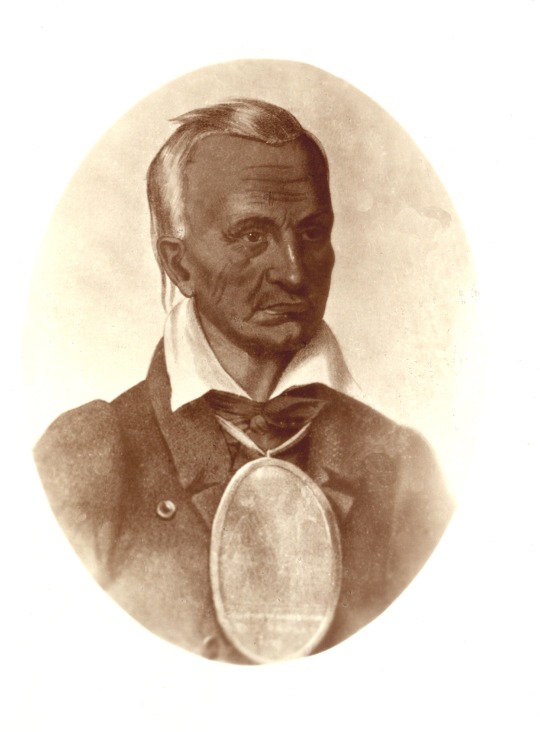
Was the great Seneca chief Red Jacket born on the western shore of Cayuga Lake in the present-day hamlet of Canoga, or was this celebrated Native American orator born on the west branch of Keuka Lake in the present-day hamlet of Branchport? The correct answer is – well, it depends on who you ask.
And it probably doesn’t help matters that there are monuments to Red Jacket in both places and that both communities purport to be the birthplace of Red Jacket, also known as Otetiana (“Always Ready”) and, when he became chief, as Sagoyewatha (“He Keeps Them Awake”). But, it may be helpful to spell out the language of each of the monuments and then discuss the claims from there.
The Canoga monument, erected by the Waterloo Library & Historical Society in October 1891, reads: “Red Jacket. Sa-Go-Ya-Wat-Ha. (He Keeps Them Awake) The Orator of the Six Nations of Iroquois. A Chief of the Wolf Clan of the Senecas. Born Near This Spot 1750 [emphasis added] Died at Buffalo, N.Y. 1830”. The Branchport monument, established by the New York State Archaeological Association in October 1933 with ownership later transferred to the Yates County Genealogical and Historical Society, reads: “Beneath this monument lie the mortal remains of the mother of Sagoyewatha – Red Jacket, orator and leader of the Seneca Indians, whose domain once included the region about Keuka Lake. With his father and mother Red Jacket spent his boyhood near this spot [emphasis added] and here the family cabin stood, 1752. This, the actual site of the home of Red Jacket’s mother, by this monument is dedicated to her memory by the heirs of Dr. J.C. Wightman, to whom her burial place was disclosed by Asa Brown, a white man adopted by the Jacket family.”
If one considers only the language of the monument, then it might seem as if the issue of Red Jacket’s birthplace is pretty cut and dried. Clearly, or so it seems, Red Jacket was born in Canoga and then grew up in Branchport. Besides, the Branchport monument appears to pay tribute more to Red Jacket’s mother, Ahweyneyohn (“Blue Flower” or “Drooping Flower”), than to the chief himself and serves as her burial place rather than as his birthplace.
In fact, the birthplace-versus-hometown explanation is one put forth by Dr. Arthur C. Parker, director of the Rochester Museum and trustee of the State Historical Association, who delivered an address titled “The Unknown Mother of Red Jacket” during the unveiling of the Branchport monument on October 21, 1933. The Yates County History Center has a typed copy of this address in our subject files. Parker notes Red Jacket’s birthplace “has been the subject of much debate” but also notes “the Seneca people themselves have seemed to agree that it was at Canoga on the shores of Cayuga Lake.” According to Parker, Red Jacket’s parents went on an autumnal hunt trip to the land of the Cayugas – some sources indicate Red Jacket’s father was Cayuga while his mother was Seneca, making their son Seneca in the matriarchal tradition – where Red Jacket’s father possibly had a cabin in which Red Jacket’s mother may have given birth to him.
“Home, however, was the mother’s home at the little settlement upon the gentle slope on the western shore of Keuka, at the sand bar near the mouth of Basswood Gully,” Parker said in his address, further describing the area of Red Jacket’s boyhood home. In his manhood, according to Parker, Red Jacket “left the valley of Keuka to take up residence at Kanadesaga” – modern-day Geneva – “and still later to find a home at Docioweh, (the site of Buffalo),” where Red Jacket is buried and where yet another monument to him stands.
Parker’s explanation, and even the location and language of the monuments, makes complete sense to me, especially when I consider my own life. If I am ever important enough for someone to erect a monument in my honor, then they could place a monument in Potsdam, New York – the location of the hospital where I was born – and another monument in Morristown, New York – the location of the house in which I grew up. Still other monuments could be placed in Utica, Malone, Auburn, or Waterloo – locations where I have spent my adult years – or even in the sites where I conducted my military career. It makes sense to me, then, that one monument honors Red Jacket’s birthplace while another monument honors his boyhood home. So, can’t we all just get along?No, apparently we cannot. I wasn’t expecting any sort of controversy when I decided to research Red Jacket’s birthplace – though I did know about the two monuments and the seemingly competing claims – perhaps only a misunderstanding or a discrepancy. And I sit squarely on the fence in this debate; I previously worked at the Waterloo Library & History Society (where a co-worker and I produced a series of short videos on local history topics, including one about Red Jacket, which you can watch here - https://www.youtube.com/watch?v=7LK7tnXnjCQ - if you don’t mind a little shameless plug), and now I work for the Yates County History Center (I would add a shameless plug for our Tumblr blog about local history topics, but since you’re reading this you’re already there).
No, apparently we cannot. I wasn’t expecting any sort of controversy when I decided to research Red Jacket’s birthplace – though I did know about the two monuments and the seemingly competing claims – perhaps only a misunderstanding or a discrepancy. And I sit squarely on the fence in this debate; I previously worked at the Waterloo Library & History Society (where a co-worker and I produced a series of short videos on local history topics, including one about Red Jacket, which you can watch here - https://www.youtube.com/watch?v=7LK7tnXnjCQ - if you don’t mind a little shameless plug), and now I work for the Yates County History Center (I would add a shameless plug for our Tumblr blog about local history topics, but since you’re reading this you’re already there).
Yet, controversy there seems to be. In fact, the two most prominent histories of Yates County – Stafford C. Cleveland’s 1873 “History and Directory of Yates County” and Lewis Cass Aldrich’s 1892 “History of Yates County, N.Y.” – sling some mud in the direction of Canoga in asserting Branchport to be Red Jacket’s birthplace. Cleveland recounts an address Red Jacket supposedly gave in Geneva while journeying to Washington, D.C. with other Iroquois chiefs – around the time of President Andrew Jackson’s first inauguration – in which the Seneca chief stated his birthplace to be near the west branch of Keuka Lake and that he lived there until he and his parents moved to Kanadesaga when he was 12. Cleveland calls Canoga’s claim to Red Jacket’s birthplace “a statement rendered improbable, not only by the facts already stated, but by the further fact that Canoga was on the territory of the Cayugas.” Cleveland posits that Keuka may have been mistranslated as Canoga and calls Red Jacket “an illustrious character, whose place of nativity we may well be proud to claim.”
Aldrich calls Red Jacket “the celebrated son of Yates County” and asserts the Branchport claim while debunking the Canoga claim: “This [Canoga claim] was undoubtedly an error, for there can be produced satisfactory evidence to show that the famous chief was born in what is now the town of Jerusalem in this county, and not far from the hamlet called Branchport.” Aldrich references Red Jacket’s Geneva address and mentions the Canoga monument established the year before his book was published in further asserting the Seneca chief’s birthplace. Stating “Red Jacket, the famous Seneca chief, first saw the light of day on the shores of Keuka Lake, at a point near the village of Branchport,” Aldrich seems almost miffed that the people of Seneca County would have the audacity to assert otherwise and erect their monument: “It may be said, however, that the claims of Jerusalem to the places of birth of the chief were and are founded on the statements made by himself on the occasion of one of his speeches at Geneva.”
The History Center has a few books about Seneca County history in our research room, but none of them seems to discuss Red Jacket or his birthplace in any kind of depth. To investigate the Canoga claim, I turned to John E. Becker’s 1949 “A History of the Village of Waterloo,” which discusses Red Jacket’s place in the founding of the county and the village (special thanks to WLHS Executive Director Cyndi Park-Sheils for letting me borrow the Becker book for this project!). According to Becker, Red Jacket visited Waterloo on several occasions and during one of these visits mentioned six big trees where Native American councils took place and the importance of the decisions reached during these meetings. One such visit to Waterloo may have happened around the time of Red Jacket’s Geneva address, as Becker describes it as “the spring of 1829, soon after General Jackson became President” when Red Jacket spoke in Waterloo and pointed toward Canoga, saying “I was born over there by the big spring.” The Seneca chief subsequently pointed out the spot near Canoga where he was born at the request of a prominent Seneca Falls citizen who had a personal acquaintance with Red Jacket. Whether intentionally or unintentionally, Becker does not mention the claim of Branchport being Red Jacket’s birthplace.
Within the History Center’s subject files, I found at least eight newspaper articles discussing Red Jacket’s birthplace. These are almost evenly divided between the two communities, giving a slight 5-3 edge toward Branchport. So, where is the real birthplace of Red Jacket? Well, as I like to say about historical figures, there is only one man who knows the truth and he has been dead nearly 200 years.

#history#historyblog#yatescounty#senecacounty#pennyanny#waterloony#canoga#branchport#redjacket#seneca#cayuga#nativeamericans
2 notes
·
View notes
Photo
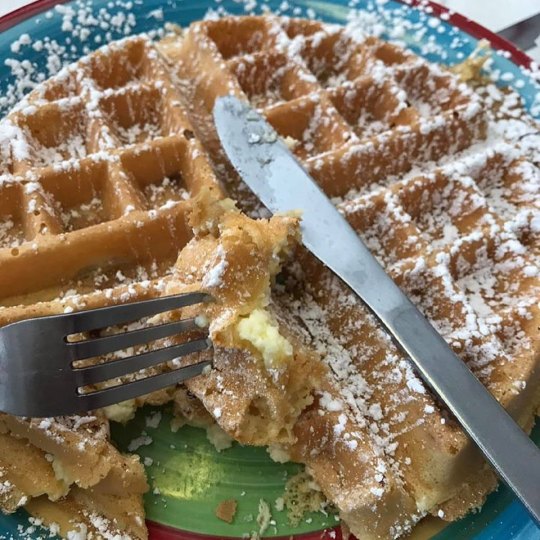
The food at this restaurant is incredible. Especially the loaded milkshakes and the cheesecake waffle! Explore more here... https://familyadventuresinnewyorkstate.com/connies-diner-waterloo-new-york/ #conniesdiner #loadedmilkshakes #loadedmilkshake #cheesecakewaffles #baconcheeseburger #deepfriedpickles #deepfriedpicklespears #food #foodie #goodeats #waterloo #waterloony #senecacounty #senecacountyny #placestoeat #yummyfood #comfortfood (at Connie's Diner, Waterloo NY) https://www.instagram.com/p/CPelE8phD5L/?utm_medium=tumblr
#conniesdiner#loadedmilkshakes#loadedmilkshake#cheesecakewaffles#baconcheeseburger#deepfriedpickles#deepfriedpicklespears#food#foodie#goodeats#waterloo#waterloony#senecacounty#senecacountyny#placestoeat#yummyfood#comfortfood
0 notes
Photo
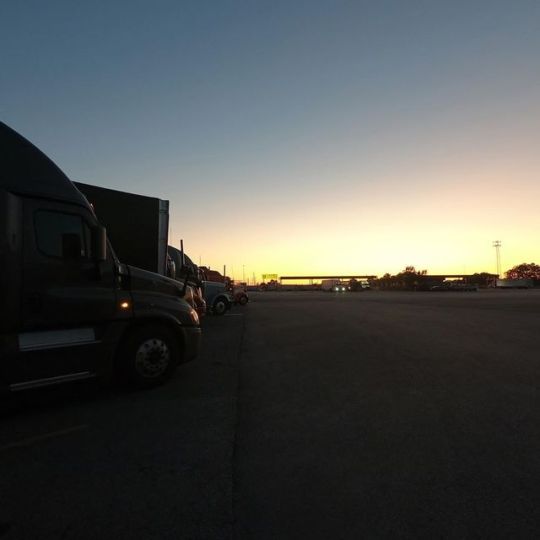
Glad to be going home soon! In the meantime I’ll be watching this gorgeous sunset 🌇😍. #sunset_pics #sunsets #photography #photographer #photooftheday #travel #traveler #travelgram #travelblogger #travelphotography #trucker #trucking #truckerslife #petrotruckstop #waterloony #newyorkstate (at Petro Travel Centers) https://www.instagram.com/p/B1xKDycHckP/?igshid=1tp8hy6n2mm6j
#sunset_pics#sunsets#photography#photographer#photooftheday#travel#traveler#travelgram#travelblogger#travelphotography#trucker#trucking#truckerslife#petrotruckstop#waterloony#newyorkstate
0 notes
Video
@wildernesssystems #radar 115 with the #helixPD in stock now at #fuzzyguppies !!! Come and check it out!!!! #wildernesssystems #kayak #kayakfishing #pedalme #fishingNY #fingerlakes #flx #waterlooNY #fishNY #nykbf (at Fuzzy Guppies)
#fuzzyguppies#nykbf#kayakfishing#wildernesssystems#pedalme#helixpd#kayak#fingerlakes#fishny#fishingny#radar#flx#waterloony
0 notes
Text
Anfield in the Spring via /r/LiverpoolFC
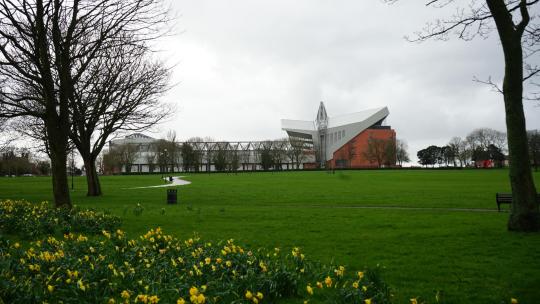
Anfield in the Spring
https://ift.tt/344qmq4
Submitted October 27, 2019 at 12:36AM by waterloonies
via reddit https://ift.tt/2JmrmxO
0 notes
Link
0 notes
Text
Elisha Williams: Hero or villian?
By Jonathan Monfiletto

Living in Waterloo and having worked most recently at the Waterloo Library & Historical Society, I know a thing or two about Elisha Williams. First and foremost, I know he is one of the founding fathers – if not the singular founding father – of the village of Waterloo. I know not one but four village streets are named after him and his family: Williams Street, Elisha Street, and – for his wife and daughter – Elizabeth and Virginia streets.
While Elisha Williams may not be as familiar to people in Yates County, it was a surprise to me when I saw his name mentioned in Paul Moyer’s book “The Public Universal Friend: Jemima Wilkinson and Religious Enthusiasm in Revolutionary America.” His name appears on only four of Moyer’s 200 pages, so it would go unnoticed to the untrained eye but it jumped out to me. It was interesting to see him portrayed more as a villain in Yates County than the hero he is in Waterloo and Seneca County.
To make a long story short, especially for those more familiar with the Public Universal Friend’s story than I am, Sarah Richards – one of the Friend’s main followers – purportedly held the Friend’s land in trust. However, when Richards died, she bequeathed the property to her daughter, Eliza Malin, rather than Rachel Malin, who became the Friend’s new trustee. What ensued was a decades-long legal battle to determine the rightful owner of the contested land. In 1812, about 13 years after Richard died, Eliza Malin and her husband, Enoch, sold their rights to the property for $1,000 and moved to Canada, beginning a wandering existence.
And here Elisha Williams enters the picture, for it was Williams who bought the Malins’ claim, having been involved in their effort to gain the Friend’s property. He was an associate of the New York Lessees – the group asserting their own land claim and that the Friend’s property fell within this claim. Moyer describes Williams as a lawyer from Hudson, New York, a multiple-term New York assemblyman, and “a far more formidable foe [to the Friend and their followers] than Enoch Malin and his allies.”
When the case once again stalled in Ontario County court (Yates County was not established yet and still part of Ontario County), Williams decided to initiate an ejectment and have the Friend’s followers removed from the land in question. Williams won for the moment, but the Court of Chancery – a state-level court – issued an injunction against the ejectment and ruled the case should be decided by a state judge. In the meantime, a lawyer representing the Friend and their followers suggested they settle with Williams, giving him the 400 acres of the Malins’ claim and helping him pay his court costs. The Friend rejected this idea.
In 1823 – four years after the Friend’s death – the Court of Chancery ruled in favor of Rachel Malin and the Friend, stating Sarah Richards held the land in trust for the Friend and the Friend had put money toward its purchase and possessed clear title to it. However, Williams appealed the ruling, saying the property should be awarded to the heirs of Eliza Malin – which, of course, was himself – and also attacking the Friend and their followers in a sort of smear campaign. The Court of Chancery rejected the appeal, but Williams appealed again, this time to the Court of Errors, the highest appellate court in the state. This court heard Williams’ appeal in 1828; it was rejected again, and this time Williams admitted defeat and gave up.
Now, allow me to tell you about the Elisha Williams I learned about. In 1807, Williams paid $2,000 for the land on which the present-day village of Waterloo is located, purchasing the land from John McKinstry, to whom the land was originally granted by New York State. Described by John Becker in his “A History of the Village of Waterloo” as “a noted lawyer of Hudson, N.Y., and one of the best known men in the state of New York,” Williams never permanently resided in his settlement because his business interests kept him occupied otherwise. However, he did have a home in the village for when he visited. The settlement took on the name New Hudson after Williams’ hometown but later took on its current name after the Battle of Waterloo in which Napoleon Bonaparte was defeated.
Williams developed the village that became Waterloo by selling off parcels, largely through an agent stationed in the settlement. One of his personal business interests, though, was water power: He constructed a race along the Seneca River to generate power for the mills in the vicinity. He also helped establish the Seneca Lock Navigation Company, which built the precursor to today’s Cayuga Seneca Canal.
Over a period of just over a decade, Williams and his agents “turned the wilderness hereabouts into a thriving village,” Becker wrote, with mills, factories, industries, stores, shops, hotels, schools, churches, and a court house as well as homes rising up and taking shape in that time. Becker sums up the place Williams holds in the history and hearts of Waterloo: “To Mr. Williams Waterloo is indebted for being so well and firmly established. He gave much to the village, and the things he did, he did well.”
2 notes
·
View notes
Photo

This diner has some of the best food around including their famous loaded milkshakes, which are out of this world! Although their cheesecake waffles are basically heaven. Learn more here... https://familyadventuresinnewyorkstate.com/connies-diner-waterloo-new-york/ #conniesdiner #waterloo #waterloony #senecacounty #senecacountyny #senecacountytourism #loadedmilkshake #cheesecakewaffles #foodie #foodlover #bestfood #restaurant #enjoyfood #yummyeats #goodeats #foodcoma #toodelicious #bestfoodaround #visitsyracuse #upstateny #upstatenewyork #bestofnewyork (at Connie's Diner, Waterloo NY) https://www.instagram.com/p/CIQrgCEBo-x/?igshid=4j12qza0tnf1
#conniesdiner#waterloo#waterloony#senecacounty#senecacountyny#senecacountytourism#loadedmilkshake#cheesecakewaffles#foodie#foodlover#bestfood#restaurant#enjoyfood#yummyeats#goodeats#foodcoma#toodelicious#bestfoodaround#visitsyracuse#upstateny#upstatenewyork#bestofnewyork
0 notes
Photo
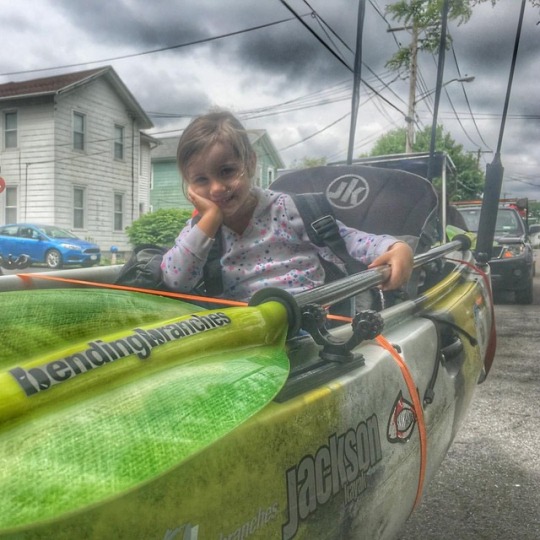
Ready for the parade!!!! We Love living in our #fingerlakes !! #happymemorialday #usa #waterlooNY #birthplaceofmemorialday #fuzzyguppies #flx #iloveny (at Fuzzy Guppies)
0 notes